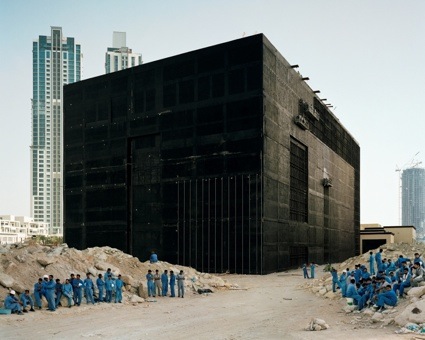 Bas Princen, Cooling plant, Dubai, 2009
Bas Princen, Cooling plant, Dubai, 2009
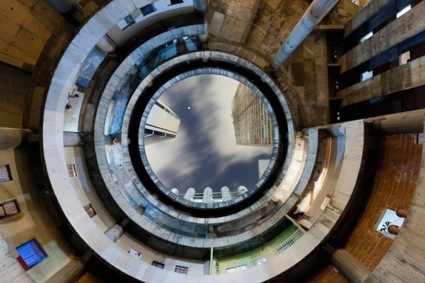 Iwan Baan, Torre David #2, 2011 (Caracas)
Iwan Baan, Torre David #2, 2011 (Caracas)
Yesterday was the press view of Constructing Worlds: Photography and Architecture in the Modern Age at the Barbican Art Gallery. I eagerly go to those journalist tours because i’m allowed to take photos to my heart’s content. The day after it’s often strictly verboten.
Constructing Worlds looks at how photographers have documented key moments in the history of 20th and 21st century architecture: the skyscrapers rising up in New York, the remains of an industrial Europe well past its glory days, the glamorous Californian lifestyle of the 1940s, the unstoppable urbanisation of China, the traces of colonization in Africa, the aftermath of the war on Afghanistan, India’s enthusiasm for modernity as built in Chandigarh by Le Corbusier, etc.
I was particularly seduced by the photos from the 1930s to 1970s. Their authors looked for beauty and evidences of social changes where most people would have only registered dust and mortar.
Constructing Worlds exhibits the work of 18 photographers only. But that’s good enough for me as i’m no fan of those Barbican shows that asphyxiate you by their discouragingly high amount of images and information. I’m therefore going to follow suit and keep my comments short.
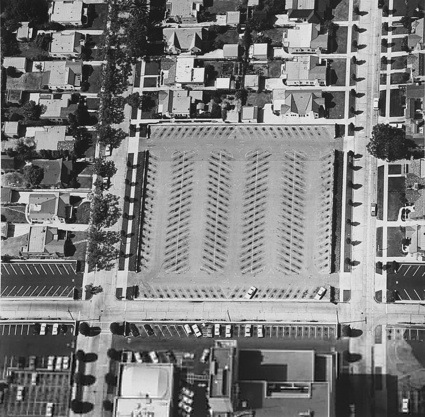 Ed Ruscha, 5000 W Carling Way, 1967/1999 (Los Angeles)
Ed Ruscha, 5000 W Carling Way, 1967/1999 (Los Angeles)
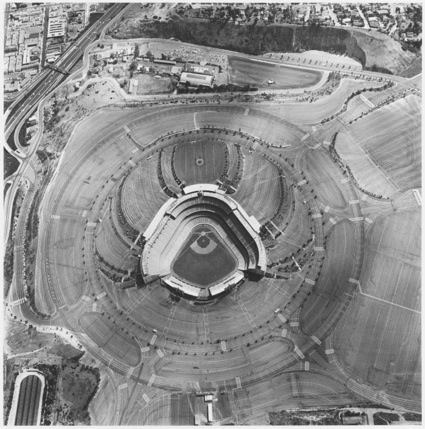 Ed Ruscha, Dodgers Stadium, 1000 Elysian Park Ave., 1967/1999
Ed Ruscha, Dodgers Stadium, 1000 Elysian Park Ave., 1967/1999
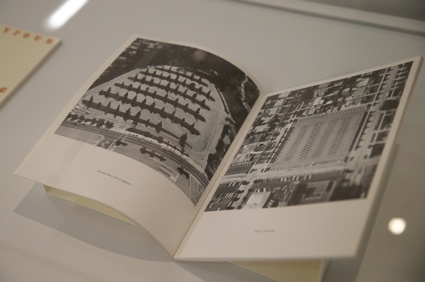 Constructing Worlds. Photography and Architecture in the Modern Age, Installation images at the Barbican Art Gallery. © Chris Jackson / Getty Images
Constructing Worlds. Photography and Architecture in the Modern Age, Installation images at the Barbican Art Gallery. © Chris Jackson / Getty Images
Ed Ruscha’s views of Thirty-four Parking Lots in Los Angeles were taken from a helicopter. The series followed his iconic “Every Building on the Sunset Strip”. Probably my favourite room in the show.
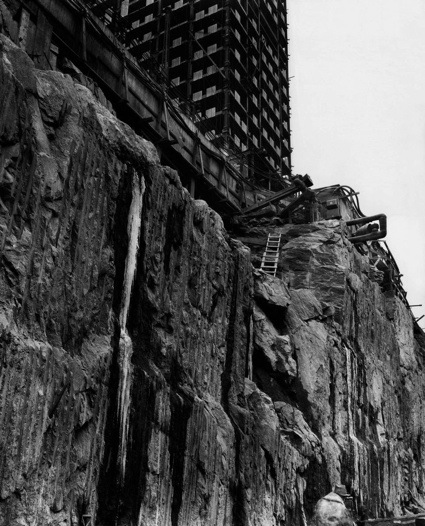 Berenice Abbott, Rockefeller Center, New York City, 1932. © Berenice Abbott, Courtesy of Ron Kurtz and Howard Greenberg Gallery, New York
Berenice Abbott, Rockefeller Center, New York City, 1932. © Berenice Abbott, Courtesy of Ron Kurtz and Howard Greenberg Gallery, New York
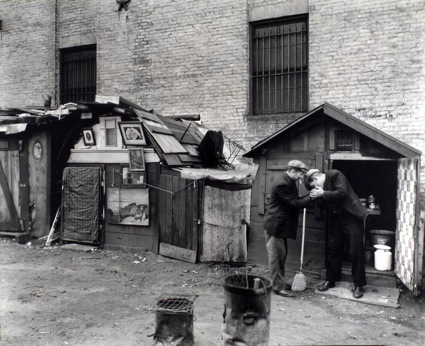 Berenice Abbott, Encampment of the unemployed, New York City, 1935
Berenice Abbott, Encampment of the unemployed, New York City, 1935
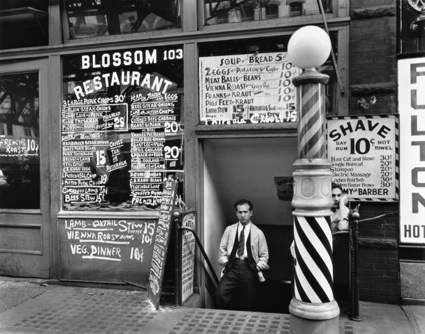 Berenice Abbott, Blossom Restaurant, 103 Bowery, Manhattan, October 03, 1935
Berenice Abbott, Blossom Restaurant, 103 Bowery, Manhattan, October 03, 1935
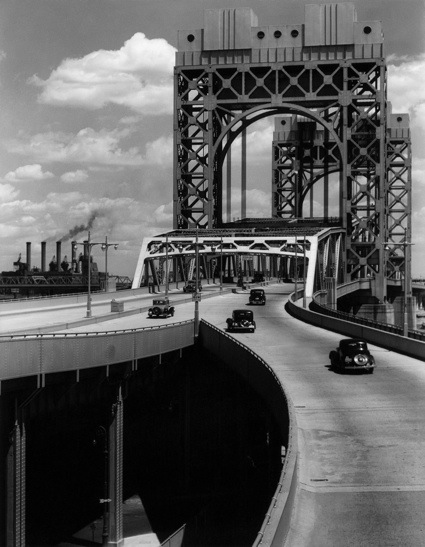 Berenice Abbott, Triborough Bridge #3, Manhattan, 1937
Berenice Abbott, Triborough Bridge #3, Manhattan, 1937
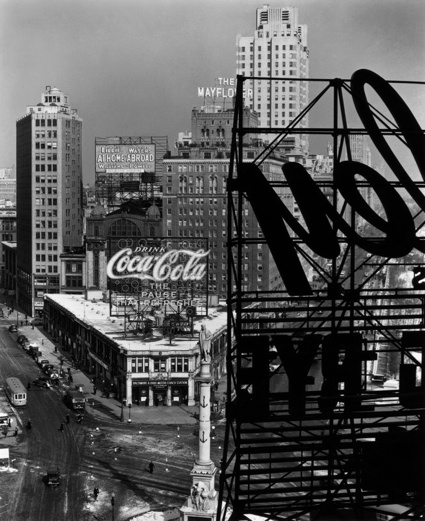 Berenice Abbott, Columbus Circle, 1936
Berenice Abbott, Columbus Circle, 1936
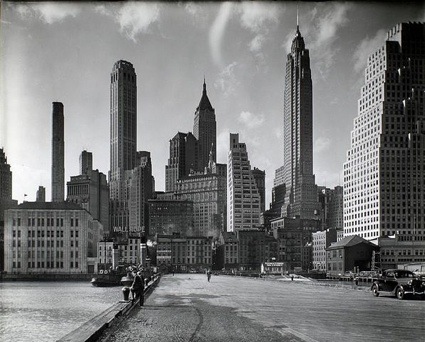 Berenice Abbott, Manhattan Skyline: I. South Street and Jones Lane from East River Pier 11, 1936
Berenice Abbott, Manhattan Skyline: I. South Street and Jones Lane from East River Pier 11, 1936
In 1929, Berenice Abbott traveled to New York City after having spent eight years in Europe. In her absence, countless 19th-century buildings had been razed to make way for skyscrapers. She decided to stay in the country and document the changing face of the city. By 1940, the photographer had completed “Changing New York,” an invaluable historical testimony of a life in Manhattan that has disappeared.
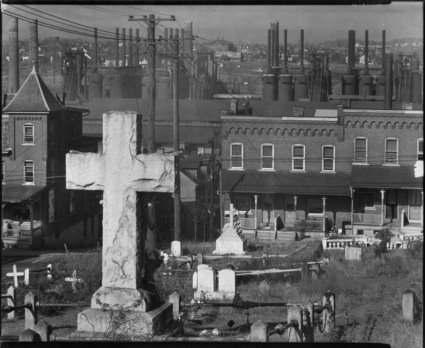 Walker Evans, Bethlehem graveyard and steel mill, Pennsylvania, November 1935
Walker Evans, Bethlehem graveyard and steel mill, Pennsylvania, November 1935
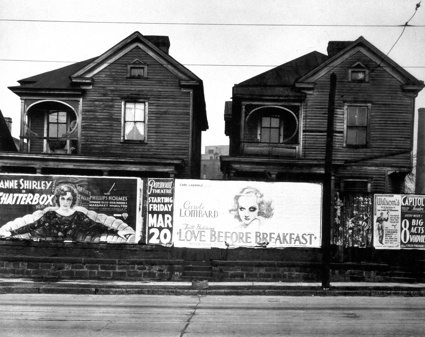 Walker Evans, Billboards and Frame Houses, Atlanta, GA 1936
Walker Evans, Billboards and Frame Houses, Atlanta, GA 1936
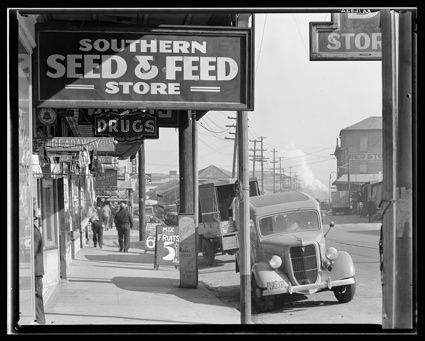 Walker Evans, Waterfront in New Orleans, French Market Sidewalk Scene, Louisiana, 1935
Walker Evans, Waterfront in New Orleans, French Market Sidewalk Scene, Louisiana, 1935
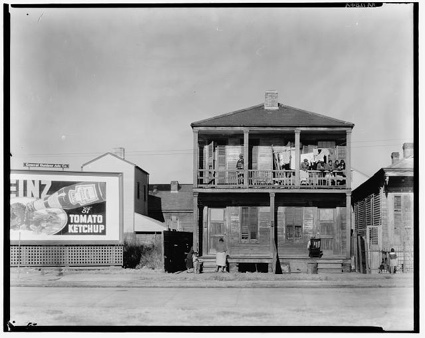 Walker Evans, Negro house, New Orleans, Louisiana, 1936
Walker Evans, Negro house, New Orleans, Louisiana, 1936
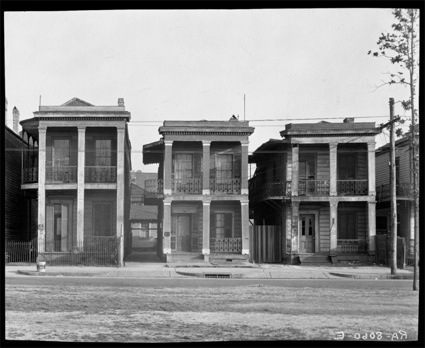 Walker Evans, Frame Houses. New Orleans, Louisiana, 1936. © Walker Evans Archive, The Metropolitan Museum of Art
Walker Evans, Frame Houses. New Orleans, Louisiana, 1936. © Walker Evans Archive, The Metropolitan Museum of Art
Walker Evans is famous for the work he did for the Farm Security Administration documenting the effects of the Great Depression. I’ve seen these images several times before but i doubt i’ll ever get tired of them. The photos were taken at the same time as Berenice Abbott’s.
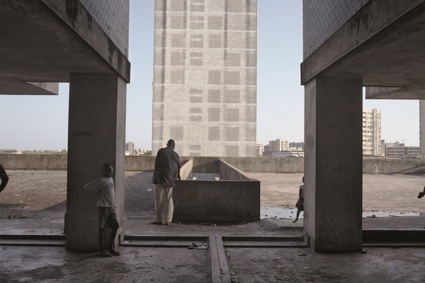 Guy Tillim, Apartment Building, Avenue Bagamoyo, Beira, Mozambique, 2008
Guy Tillim, Apartment Building, Avenue Bagamoyo, Beira, Mozambique, 2008
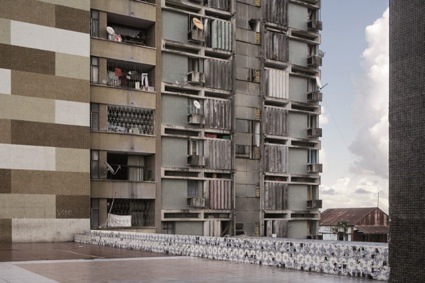 Guy Tillim, Apartment Building, Beira, Mozambique, 2007
Guy Tillim, Apartment Building, Beira, Mozambique, 2007
Guy Tillim’s work examines modern history in Africa against the backdrop of its colonial and post-colonial architectural heritage.
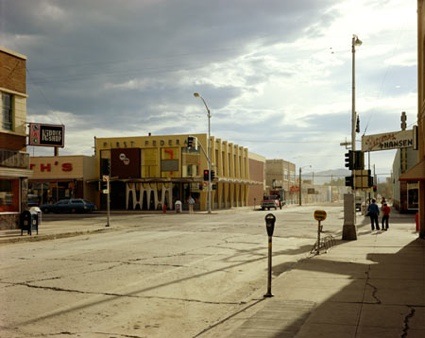 Stephen Shore, Second Street and South Main Street, Kalispell,, Montana, 1974
Stephen Shore, Second Street and South Main Street, Kalispell,, Montana, 1974
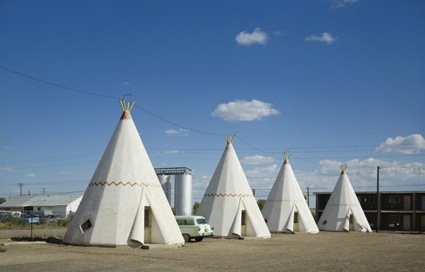 Stephen Shore, Wigwam Motel, Holbrook, AZ, August 10, 1973
Stephen Shore, Wigwam Motel, Holbrook, AZ, August 10, 1973
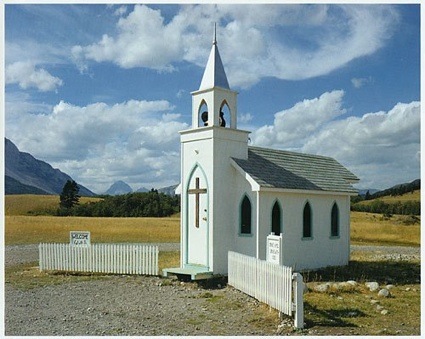 Stephen Shore, Bellevue, Alberta, August 21, 1974
Stephen Shore, Bellevue, Alberta, August 21, 1974
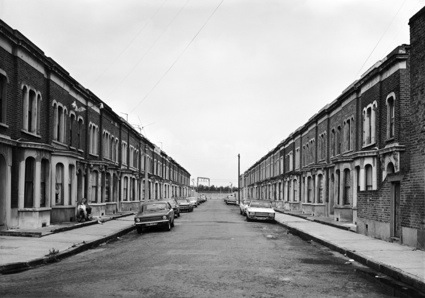 Thomas Struth, Clinton Road, London, 1977
Thomas Struth, Clinton Road, London, 1977
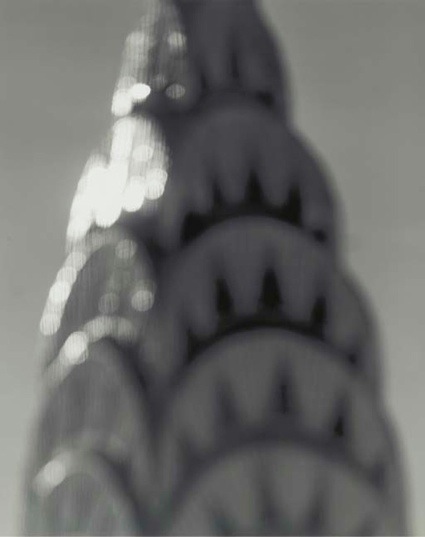 Hiroshi Sugimoto, Chrysler Building (Architect: William van Alen), 1997
Hiroshi Sugimoto, Chrysler Building (Architect: William van Alen), 1997
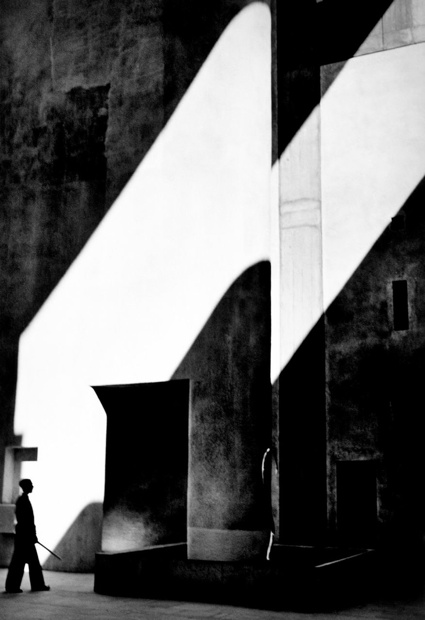 Lucien Hervé-High Court of Justice, Chandigarh, 1955
Lucien Hervé-High Court of Justice, Chandigarh, 1955
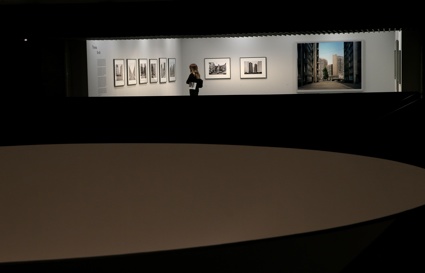 Constructing Worlds. Photography and Architecture in the Modern Age, Installation images at the Barbican Art Gallery. © Chris Jackson / Getty Images
Constructing Worlds. Photography and Architecture in the Modern Age, Installation images at the Barbican Art Gallery. © Chris Jackson / Getty Images
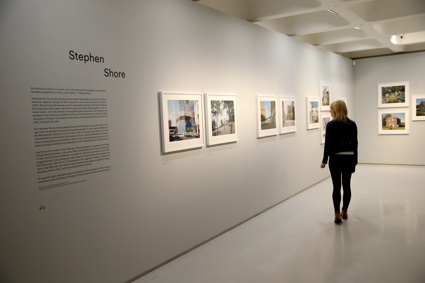 Constructing Worlds. Photography and Architecture in the Modern Age, Installation images at the Barbican Art Gallery. © Chris Jackson / Getty Images
Constructing Worlds. Photography and Architecture in the Modern Age, Installation images at the Barbican Art Gallery. © Chris Jackson / Getty Images
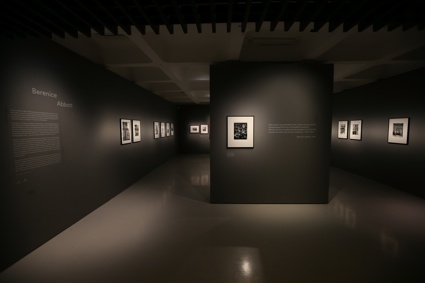 Constructing Worlds. Photography and Architecture in the Modern Age, Installation images at the Barbican Art Gallery. © Chris Jackson / Getty Images
Constructing Worlds. Photography and Architecture in the Modern Age, Installation images at the Barbican Art Gallery. © Chris Jackson / Getty Images
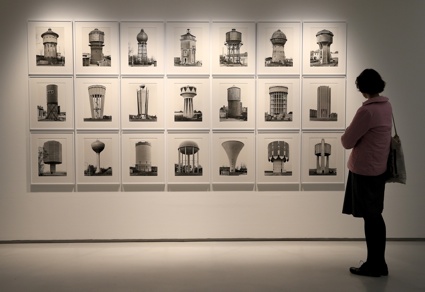 Constructing Worlds. Photography and Architecture in the Modern Age, Installation images at the Barbican Art Gallery. © Chris Jackson / Getty Images
Constructing Worlds. Photography and Architecture in the Modern Age, Installation images at the Barbican Art Gallery. © Chris Jackson / Getty Images
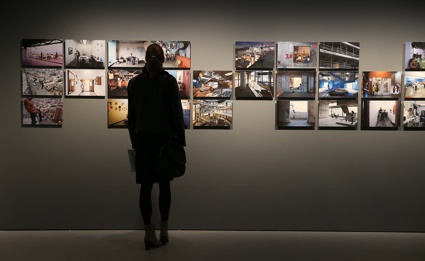 Constructing Worlds. Photography and Architecture in the Modern Age, Installation images at the Barbican Art Gallery. © Chris Jackson / Getty Images
Constructing Worlds. Photography and Architecture in the Modern Age, Installation images at the Barbican Art Gallery. © Chris Jackson / Getty Images
The exhibition is curated by Alona Pardo and Elias Redstone and designed by architecture firm, Office KGDVS, led by Kersten Geers and David Van Severen.
Constructing Worlds: Photography and Architecture in the Modern Age is at the Barbican Art Gallery until 11 January 2015.
Previously: Guy Tillim: Avenue Patrice Lumumba and Burke + Norfolk: Photographs From The War In Afghanistan.
